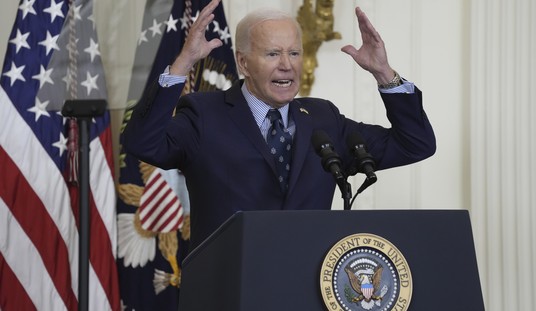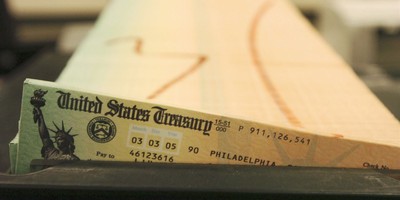The greatest central banker in my professional lifetime was Paul Volcker. His signal achievement was bringing down the inflation rate from roughly 15 percent to about 3 percent more than three decades ago. The simplest way to look at the economic evils of runaway prices is to think of inflation as a tax hike -- on consumers, savers, investors, corporate profits, capital gains, and so on. One humongous tax hike. And it was the myriad tax-hike effects of high inflation that wrecked the American economy in the 1970s.
But Volcker turned that around, and he did so using a rules-based approach to slaying price hikes. He was an old fashioned central banker who still believed the dollar should be as good as gold. And he carefully watched market-based signals like gold, commodities, and the exchange value of the dollar to let him know if he was going down the right road.
Ronald Reagan gave Volcker the ground to stand on, Volcker implemented his rules-based policy, and a bleak inflation outlook was vanquished. In fact, it was Reagan’s supply-side tax cuts in combination with Volcker’s hard-money policies that launched a 25-year economic boom. Nearly 50 million new jobs were created while economic growth averaged about 3.5 percent a year. That boom also financed a U.S. victory over Soviet communism and restored American leadership worldwide.
I reflect on all this as Janet Yellen gets ready to take over at the Federal Reserve. The economic issues are very different today than they were in the ’70s and early ’80s. Inflation is not the problem. But high unemployment and slow growth are. The U.S. economy is being held back.
So, how will Yellen handle this? And how will she renormalize an expansive Federal Reserve balance sheet and permit interest rates to rise back to historic norms?
Tongue-in-cheek, I’ve been calling Yellen the Empress of the Doves. But I do so with respect rather than condemnation. The truth is, Fed chairmen are like Supreme Court justices. You never really know what they’re going to do until they actually do it. But Yellen will be dovish for a good long while. And after that, Fed operations must change.
My concern with Ms. Yellen is whether she will abide by clear monetary rules as the central bank puts an end to extraordinary quantitative easing and related interventions in the financial markets. Can Yellen approach her monetary challenge in the disciplined way that Volcker approached his years ago?
Under QE3, both the Fed’s balance sheet and excess reserves have increased by about $1 trillion. But the jump in bank reserves has not translated into a more rapid turnover, or velocity, of money and loans. M2 is still growing at a modest 6.5 percent. The multipliers have broken down. Nominal GDP growth (real growth plus inflation) hovers below 4 percent. And the Fed is rewarding banks for not taking risks or making more loans by paying 25 basis points on idle reserves, which comes to roughly $6 billion in free money. This should be stopped.
But more to the point, Janet Yellen should keep a sharp eye on market-price indicators as she moves to normalize Fed operations. That includes commodity indexes, gold, the exchange value of the dollar, and the shape of the Treasury yield curve. Right now these signals are quiescent. That’s good. But the march to faster nominal GDP growth should be guided by these signals. I would also add in the Taylor rule, whereby the fed funds rate is adjusted relative to inflation and unemployment.
Unfortunately, Yellen has a Phillips-curve reputation, and is guided by a trade-off between unemployment and inflation. This could bring her to an excessively dovish stance if she focuses too heavily on unemployment. And in recent decades, inflation and unemployment have moved together, not in opposite directions as the Phillips curve instructs. In fact, the Fed’s whole central-planning apparatus seems caught in this failed model. This is troublesome. But the real problem with this economy is not a lack of liquidity. It’s a lack of incentives to grow, invest, take risks, and start new businesses. Tax rates are going up again. Corporate tax reform seems dead in the water. Regulatory threats under the Obama administration proliferate. And the whole jerry-built Obamacare plan is chock full of tax and regulatory obstacles to economic growth, not to mention how it damages the health-care system.
Repeal Obamacare and embark on pro-growth tax and regulatory reform, and the economy will grow much faster without repeated injections of Fed liquidity. There is only so much the central bank can do. And in terms of QE, it may already be that it can do no more.
So what can Janet Yellendo? Bring a disciplined, rules-based approach to Fed policy. That would be a welcome development indeed.

























Join the conversation as a VIP Member